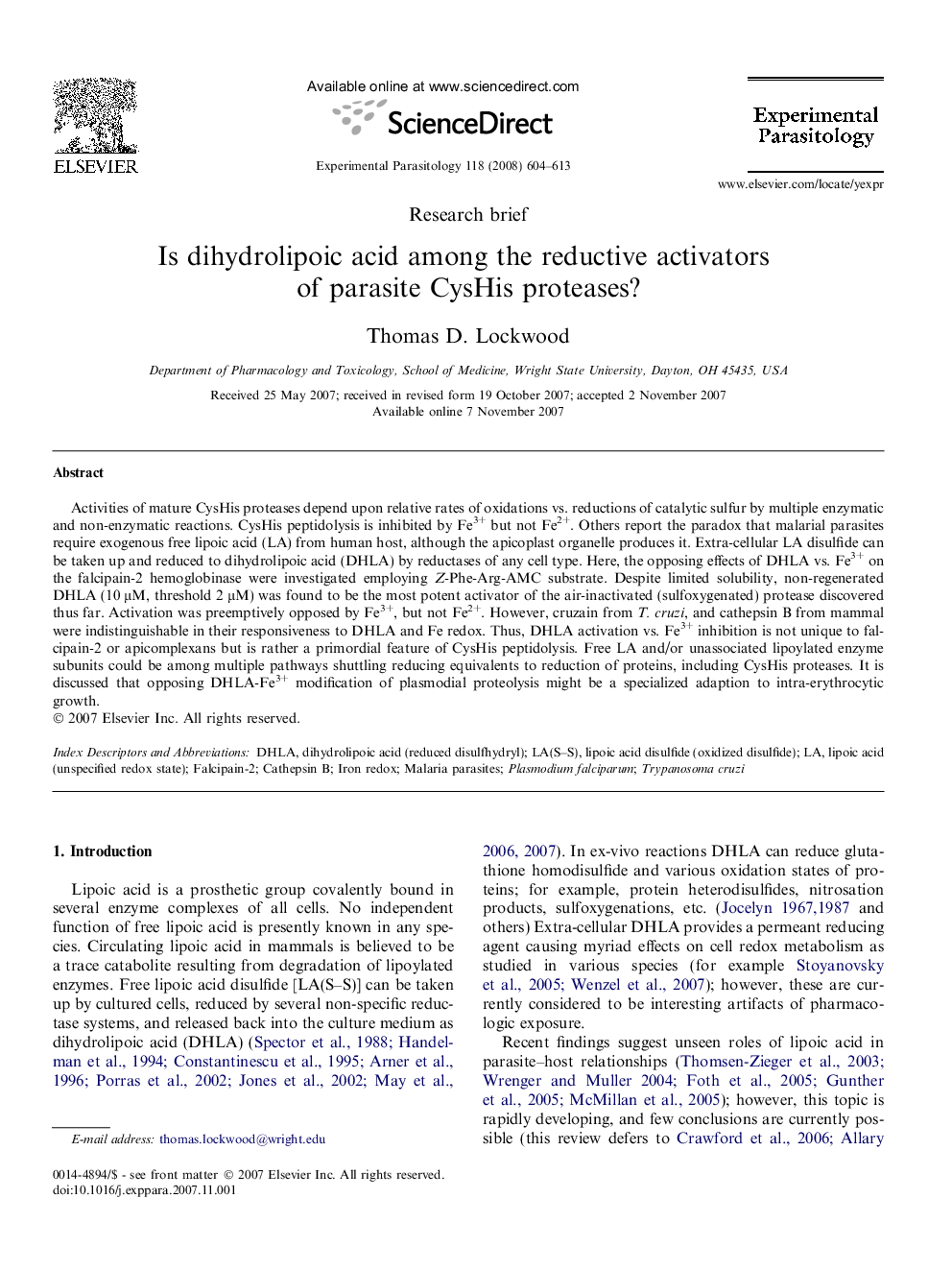| Article ID | Journal | Published Year | Pages | File Type |
|---|---|---|---|---|
| 4371479 | Experimental Parasitology | 2008 | 10 Pages |
Abstract
Activities of mature CysHis proteases depend upon relative rates of oxidations vs. reductions of catalytic sulfur by multiple enzymatic and non-enzymatic reactions. CysHis peptidolysis is inhibited by Fe3+ but not Fe2+. Others report the paradox that malarial parasites require exogenous free lipoic acid (LA) from human host, although the apicoplast organelle produces it. Extra-cellular LA disulfide can be taken up and reduced to dihydrolipoic acid (DHLA) by reductases of any cell type. Here, the opposing effects of DHLA vs. Fe3+ on the falcipain-2 hemoglobinase were investigated employing Z-Phe-Arg-AMC substrate. Despite limited solubility, non-regenerated DHLA (10 μM, threshold 2 μM) was found to be the most potent activator of the air-inactivated (sulfoxygenated) protease discovered thus far. Activation was preemptively opposed by Fe3+, but not Fe2+. However, cruzain from T. cruzi, and cathepsin B from mammal were indistinguishable in their responsiveness to DHLA and Fe redox. Thus, DHLA activation vs. Fe3+ inhibition is not unique to falcipain-2 or apicomplexans but is rather a primordial feature of CysHis peptidolysis. Free LA and/or unassociated lipoylated enzyme subunits could be among multiple pathways shuttling reducing equivalents to reduction of proteins, including CysHis proteases. It is discussed that opposing DHLA-Fe3+ modification of plasmodial proteolysis might be a specialized adaption to intra-erythrocytic growth.
Keywords
Related Topics
Life Sciences
Immunology and Microbiology
Parasitology
Authors
Thomas D. Lockwood,
